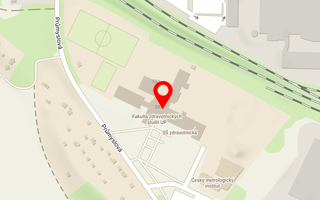Peripheral venous cannulation under ultrasound guidance - a new challenge in nursing
Provider: Univerzita Pardubice
Programme: Vnitřní granty FZS
Implementation period: 01.03.24 - 28.02.26
Workplace:
Fakulta zdravotnických studií - Katedra ošetřovatelství
Investigator: Horáčková KateřinaTeam member: Doležal Jan
Description:
The issue of venous catheters is highly topical in all medical disciplines. The insertion of peripheral cannulas under ultrasound guidance is still not a common part of nursing care in the Czech Republic, but it is certainly a great opportunity for non-medical health professionals who are competent to insert peripheral venous catheters (general nurses, paramedics, paediatric nurses and midwives). They, with the help of ultrasound navigation, can cannulate the deep peripheral venous system with LPC (long peripheral catheder) and MPC (medium term peripheral venous catheters - Mini-Midline, MIDLINE) catheters. These cannulas can be left in the catheter from several weeks to several months and are the recommended choice for DIVA (difficult intravenous access) patients in whom it is very difficult to insert any venous catheter using conventional techniques and in a normal time (e.g. The catheter can be left for intermittent application in aftercare facilities, home care or nursing homes. Compared to long-term venous catheters (PICC, PORT), no X-ray or ECG monitoring is required after cannulation. On the contrary, as with long-term venous catheters, blood can be drawn from them.
The issue of venous catheters is highly topical in all medical disciplines. The insertion of peripheral cannulas under ultrasound guidance is still not a common part of nursing care in the Czech Republic, but it is certainly a great opportunity for non-medical health professionals who are competent to insert peripheral venous catheters (general nurses, paramedics, paediatric nurses and midwives). They, with the help of ultrasound navigation, can cannulate the deep peripheral venous system with LPC (long peripheral catheder) and MPC (medium term peripheral venous catheters - Mini-Midline, MIDLINE) catheters. These cannulas can be left in the catheter from several weeks to several months and are the recommended choice for DIVA (difficult intravenous access) patients in whom it is very difficult to insert any venous catheter using conventional techniques and in a normal time (e.g. The catheter can be left for intermittent application in aftercare facilities, home care or nursing homes. Compared to long-term venous catheters (PICC, PORT), no X-ray or ECG monitoring is required after cannulation. On the contrary, as with long-term venous catheters, blood can be drawn from them.
